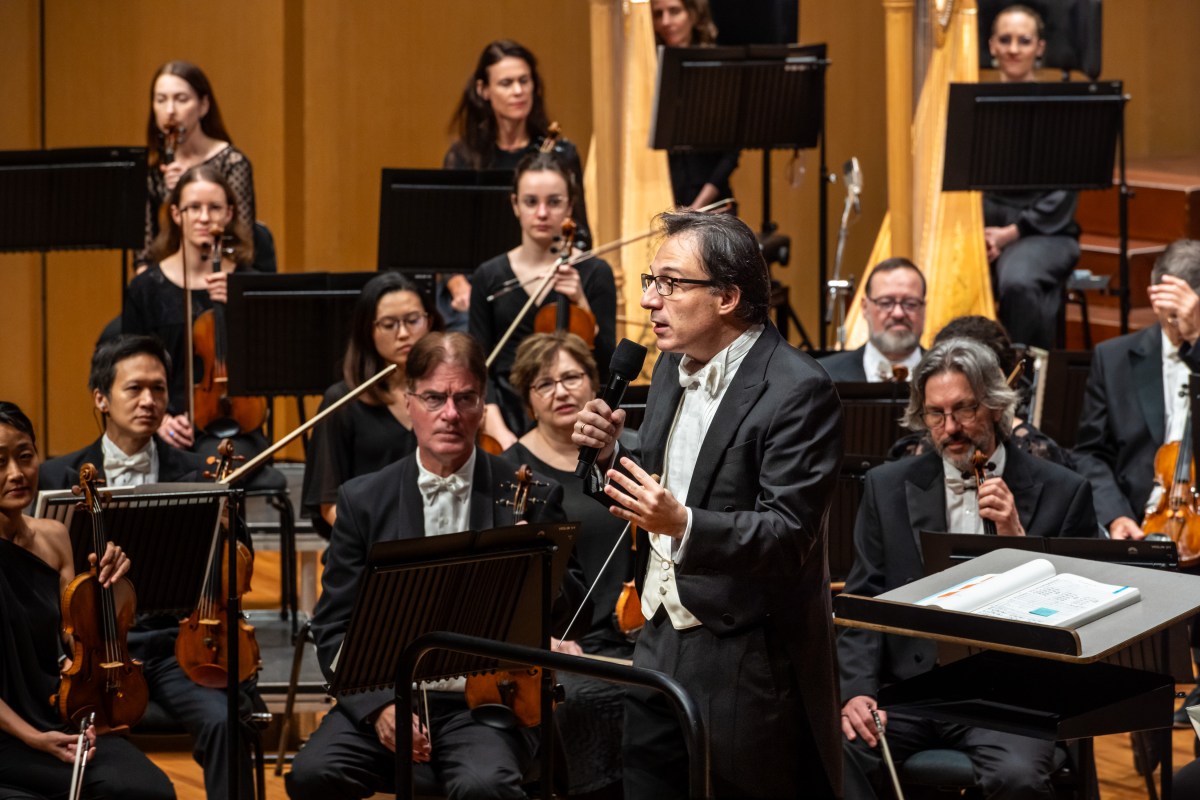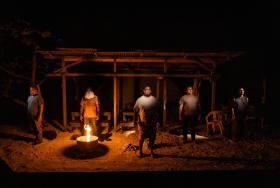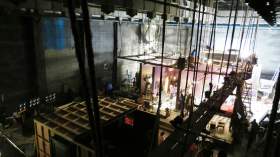2023 was Umberto Clerici’s first season as Chief Conductor of the Queensland Symphony Orchestra (QSO) and he continued the tradition set by a predecessor of working through the nine Mahler symphonies, one each year. His predecessor had finished with the famous Symphony No. 5 but, instead of starting again with the First Symphony, he continued the series, presenting the sixth symphony in September 2023. It was his first Mahler Symphony as conductor and he gave it an expert and impassioned reading.
As Clerici says ‘the journey continues’ and this time with Mahler’s mighty seventh symphony as the opening Maestro concert of the 2024 season. Describing this monumental, five movement, 80-minute work as ‘mysterious and magnetic’ Clerici was at pains to explain Mahler’s most enigmatic work to the QSO audience. The least played and possibly the least understood of his symphonies, with the epithet of ‘ugly duckling’, it was neither well received nor understood when first performed.
Clerici’s thoughtful and animated summary showed the audience what to expect and watch for in each of the movements and why Mahler 7 deserves consideration, offering a musical narrative of a journey from dusk to dawn, from darkness into light. His knowledge and attention to detail, combined with his innate passion and enthusiasm for the work, was infectious in inspiring both audience and orchestra. There was palpable anticipation from both as the Maestro raised his baton for the first bar.
Scored for a very large orchestra of 100 plus players, with interesting additional instrumentation, the first movement Langsam – Allegro risuluto ma non troppo, continues where the sixth symphony left off with the hero (represented by Mahler himself) having been shattered by the three huge hammer strokes. It started hesitantly with rumbling darker strings over which the foreboding melody from the tenor horn rose evocatively.
This sweet-sounding horn, new to the orchestra and resembling a small tuba, was beautifully controlled by Principal Trombonist, Jason Redman. The horn soared plaintively above the full strings. It was a magic opening to the work, with Clerici in full control from the beginning.
The movement itself in sonata form meanders in multiple diverse directions between many musical moods and colours, the full orchestra being stretched to capacity. Swinging from being both a joyous to a sometimes-gloomy ride, the QSO played exuberantly and sensitively with a marvellous rich palette of orchestral colours and sounds that filled the Concert Hall.
The horns were prominent, as was the brass, with some tremendous playing in particular from the trumpets, that included pianissimo fanfares and bright, unbelievably high-top notes. There were fiery sections from the timpani and percussion alongside delicate harp glissandi. The woodwind provided solid and measured support throughout, while the glorious second theme from the violins enabled thrilling arpeggios from the celli.
The next three movements were played together; two nocturnes – Nachtmusik I and Nachtmusik II with a shadowy, haunting Scherzo: Schattenhaft dividing them. The first nocturne started slowly with two gorgeous horn solos, one dominant, the other muted. The woodwind took up the dance theme with scurrying bird-like calls at dusk, becoming quite distorted in the descent from dusk to night.
There was solid playing from the clarinets, oboes, flutes, piccolo and bassoons, while the cor anglais took up the theme from the horns. The darker strings continued the dance theme passing it to the violins and violi, who gave us some fine percussive sounds with their bows tapping strings. Two finely played solos from principal viola and cello were a bonus. All in all, the colourful soundscape was extremely well managed by conductor and musicians and gave a real sense of a world hidden under the cover of night.
The Scherzo of the third movement has a spooky, fear-of-the-unknown quality, with the low orchestral rumbling rising to a macabre crescendo vaguely representing a skewered waltz. The movement both built and retracted with a series of quirky contorted rhythms and much delightful cacophony from the woodwind. The strings slid from one note to the next in a drunken shower of cleverly-played glissandi, while the principal viola gave us a finely-crafted ghostly solo.
The second nocturne, Nachtmusik – andante amoroso, shifted the mood from gloom and ghosts to love and romance. With reduced instrumentation, the movement commenced with an exquisite violin solo from the concertmaster. A gentle horn solo added to the unusual instrumentation of guitar, mandolin and two harps to create a delicate serenade that was charmingly conducted by Clerici. The rest of the movement saw excellent playing from celli, horns and flutes across the sweeping, lush music of the strings.
In the final fifth movement, Rondo, Mahler made a positive change from the sombre night to a joyous and triumphant dawn. Misunderstood as perhaps being too brash and loud, it would seem to narrate the transformation from his previous state of mind into a celebratory sense of joy and redemption. Commencing with crashing timpani and the dark strings, there was tremendous playing by the double basses and celli and ringing fanfares from the brass.
The jaunty second section featuring the woodwind offered a melodic pastoral soundscape, the sounds of nature and birds weaving their way between the powerful brass. The marching of the dark strings and screeching violins gave an exhilarating quality to the finale with a layering of colourful orchestration adding a frenetic element of excitement. In between we got glimpses of the pastoral world that Mahler loved so much, with the distinct addition of cow bells both in the distance and on stage. A truly marvellous movement, brilliantly delivered.
Read: Exhibition review: Uncertain Contours of Images: Sayoko Suwabe, SOL Gallery
This Maher 7 was a triumph from beginning to end and demonstrated how empowered the QSO has become under its new Chief Conductor with concert repertoire and events of such quality and scale. The Orchestra played exceptionally well with total commitment and tremendous joy. Moreover, Maestro Clerici is a powerhouse on the podium; an exuberant, exacting conductor, energetically giving of himself in delivering a masterful, technically superb and passionate reading of the score. A terrific night in the Concert Hall.
Umberto’s Mahler
Queensland Symphony Orchestra
2024 Maestro Series
QPAC
Conductor: Umberto Clerici
Umberto’s Mahler was performed 23-24 February 2024





